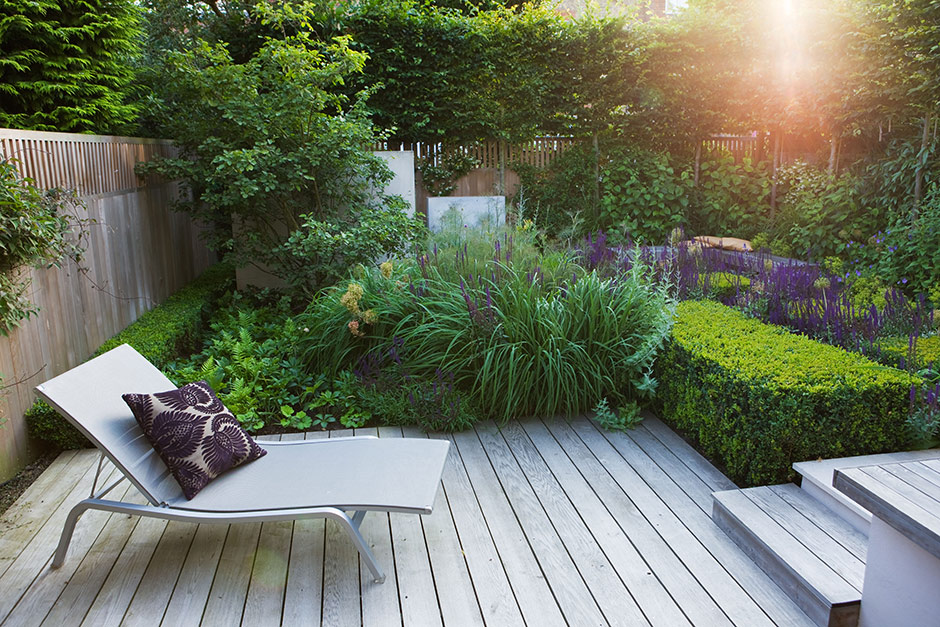Many people find great pleasure in gardening for the therapeutic benefits it provides and the satisfaction they derive from caring for living creatures. However, the constraints of modern life often prevent us from dedicating time and energy to outdoor living areas, which can be disappointing. The good news is that a beautiful garden does not require much maintenance. If you apply the right strategy and choose the right plants for your garden, you can create a low-maintenance garden that will grow with very little work on your part. In this article, we take a closer look at the art of low maintenance gardens, bringing you great ideas and strategies for developing an outdoor space that is lush, bright and doesn’t require regular maintenance.
1. Love the Local Flora and Fauna
Using native plants is crucial to the success of any low maintenance gardening business. Because native plants are naturally adapted to local climate and soil conditions, they require less water, fertilizer and general care than non-native plants. Native plants are also more resistant to pests and diseases. They are also more resistant to diseases and pests native to the area, reducing the need for chemical treatments. If you choose native plant and animal species, you can create a garden that is in perfect harmony with the environment and requires significantly less maintenance.
2. Use Perennials
Plants that live longer than a year are called perennials. These plants require minimal care. Perennials are plants that grow year after year, as opposed to annuals that need to be replanted every year. This saves you both time and labor. Be sure to choose a variety of perennials as they will keep you blooming year after year. This not only increases aesthetic appeal, but also reduces the frequency with which replanting is required.
3. Use Mulch to retain Moisture
Using a layer of organic mulch, such as wood chips or straw, around your plants is an easy and effective way to reduce the amount of garden maintenance required. In addition to keeping the soil from drying out and being unsuitable for plant growth, mulches also regulate soil temperature. If you make an effort to keep your soil consistently moist and weed-free, you will need to water your plants less often and spend less time weeding.
4. Use Effective Methods of Watering the Land
When it comes to low maintenance gardening, the value of an automatic watering system such as drip irrigation or a soaker hose cannot be overemphasized. These systems deliver water directly to plant roots, reducing water loss through evaporation and runoff. To save even more water and reduce the amount of manual watering required, you can program watering timers to run at optimal times, such as early morning or late evening.
5. Classify Plants according to their Water Needs
Strategically placing plants can significantly reduce the amount of labor required for maintenance. Create “water zones” by grouping plants with similar water needs. This ensures that the plants receive the correct amount of liquid nutrients, preventing them from getting too much or too little water. Your plants will be healthier and require less attention if you reduce the water stress your plants experience and maximize their efficiency.
6. Grass Area Limitation
Lawns require constant mowing, fertilizing and watering, all of which take a lot of time and resources. You may want to consider reducing the size of your lawn or replacing it with low-maintenance alternatives, such as native ground covers, gravel paths, or plants that can survive drought. This not only reduces maintenance work, but also improves the overall appearance of the garden.
7. Aim for A Simple Design
Elegant and understated minimalist garden designs not only exude sophistication, but also require less maintenance. Choose some interesting features as focal points, such as strategically placed sculptures or eye-catching plant species, and keep hardscape elements clean and simple. A garden free of unnecessary items reduces the amount of maintenance that needs to be done on a regular basis and allows gardeners to focus on the most important aspects of plant care.
Conclusion:
Creating a low-maintenance garden needn’t compromise on attractiveness or variety. With careful selection of native plants, adding perennials, using mulch, establishing an efficient watering system, grouping plants according to group needs, increasing the number of plants, it is relatively easy to create a to develop a thriving garden. With limited lawn space, minimalist design. Having a garden that doesn’t require a lot of attention and care will help you relax and enjoy the beauty of nature more, taking some of the stress out of having to take care of it on a regular basis.
FAQs:
1. Can I create a low maintenance garden with many plant species?
Of course! Choose low-maintenance plant species, group them according to care needs and use an efficient watering system for a varied but manageable garden.
2. Are there low maintenance alternatives to traditional lawns?
Yes, you can replace traditional lawns with options such as native ground covers, ornamental grasses or gravel paths to create a visually appealing, low maintenance garden.
3. Will a minimalist garden design be visually interesting?
Not at all! Carefully executed minimalist design highlights the main points of interest and the natural beauty of the plants, creating an atmosphere of elegance and tranquility.
4. Can I still get colorful flowers in a low maintenance garden?
Of course! Choose perennials that bloom year-round to keep your garden vibrant with little effort.
5. Do I need professional help designing a low maintenance garden?
While consulting a professional gardener can provide valuable insight, you can also design a low-maintenance garden yourself by researching suitable plant varieties and adopting effective practices.



